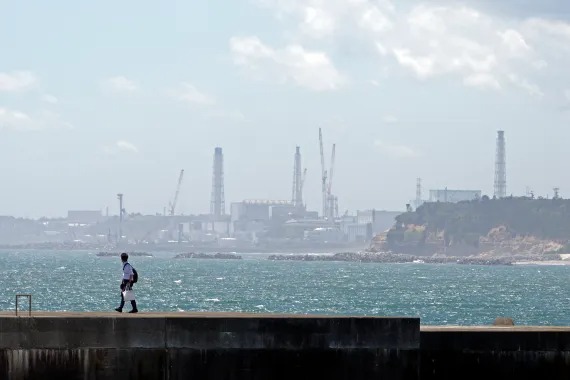Japan, a nation haunted by the memory of the devastating 2011 triple disaster, has embarked on a challenging path toward decommissioning the Fukushima Daiichi nuclear plant. While recent headlines have focused on the release of treated water into the Pacific, the monumental task of decommissioning the entire plant presents a complex and lengthy journey. After the tsunami and nuclear catastrophe disrupted lives, communities, and the environment, there is a glimmer of hope that proper decommissioning might entice people back to the affected region. However, experts warn that this process will be anything but straightforward.
Slow Progress and Environmental Concerns
Progress towards decommissioning the Fukushima Daiichi nuclear plant has been hampered by the accumulation of 1.3 billion tonnes of treated radioactive wastewater used to cool the reactors during the disaster. Tokyo Electric Power Company (TEPCO), the plant’s operator, attributes this delay in part to the necessity of storing this water in thousands of tanks, thereby occupying precious space needed for decommissioning. This discharge process, which began on August 24 after the approval of the International Atomic Energy Agency, faces strong opposition from local fishing communities and neighboring countries like China, who continue to express environmental concerns about the release of this water into the ocean.
The Prolonged and Complex Decommissioning Challenge
TEPCO estimates that the entire decommissioning process will span between 30 to 40 years, a timeline far longer than the industry norm. Nuclear engineering experts like Brent Heuser from the University of Illinois emphasize the unique challenges Japan faces, including widely dispersed fuel and the need for human and robotic efforts to detect and manage fuel debris. The logistical puzzle of where to store all the waste, especially from the dismantling of reactor buildings, remains unsolved.
Radiation Dangers and Technological Exploration
The high levels of radiation within the Fukushima Daiichi plant make it nearly impossible for workers to enter and assess the full extent of damage. To overcome this challenge, TEPCO has employed robotic probes equipped with advanced technologies, including 3D scanners, sensors, and cameras, to map the terrain, measure radiation levels, and search for the elusive missing fuel. However, the data collected so far indicates a grim picture of melted cores and structural damage.
Financial Strain and Uncertainty
The immense cost of decommissioning is also a major concern. While the decommissioning of a standard nuclear plant typically costs between $300 million to $400 million, Japan’s bill is estimated at a staggering 21.5 trillion yen ($141 billion). This financial burden, coupled with the need for specialized equipment and compensation to local residents affected by the disaster, adds further complexity to an already challenging endeavor.
Despite these formidable challenges, individuals like Shinichi Sato, a teacher who witnessed the tsunami’s impact on Ukedo elementary school, maintain optimism. Sato hopes that the lessons learned from the tragedy will pave the way for a better future. While the accident cannot be undone, the commitment to move forward and make the region safe again is a testament to the resilience of the people affected by this catastrophic event.
In conclusion, Japan’s journey toward decommissioning the Fukushima Daiichi nuclear plant is a long and complex one, filled with technical, environmental, and financial challenges. As the nation grapples with the aftermath of the 2011 disaster, there is a shared hope that proper decommissioning will not only ensure safety but also encourage people to return to the affected areas and rebuild their lives. However, this journey is fraught with uncertainty and obstacles, making it a testament to human perseverance in the face of adversity.















